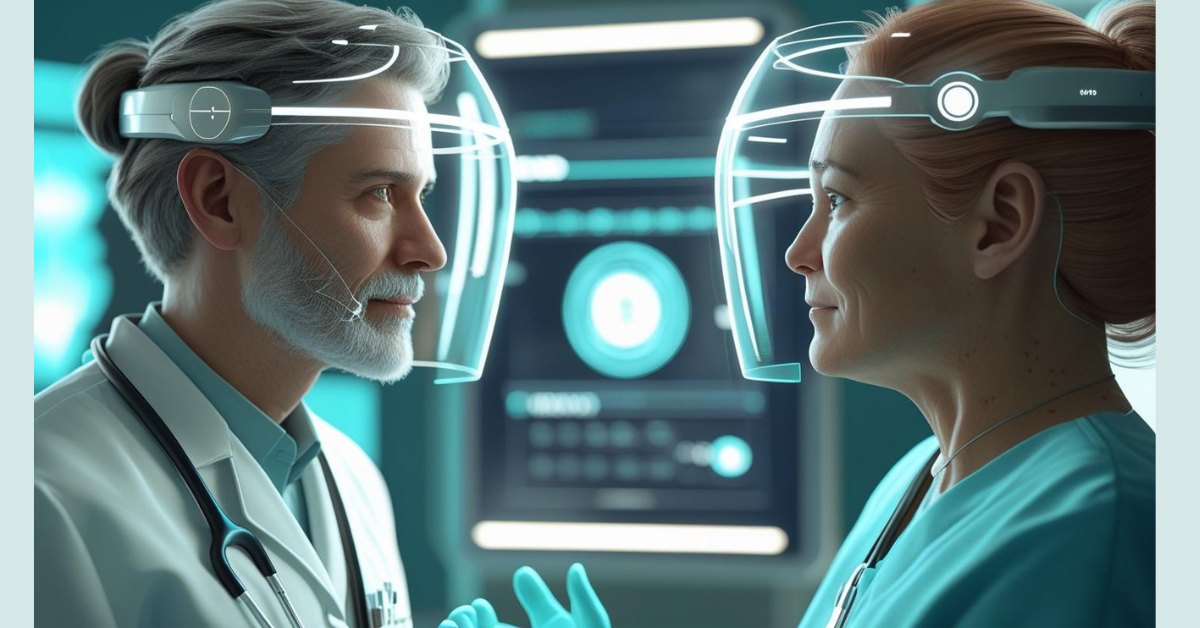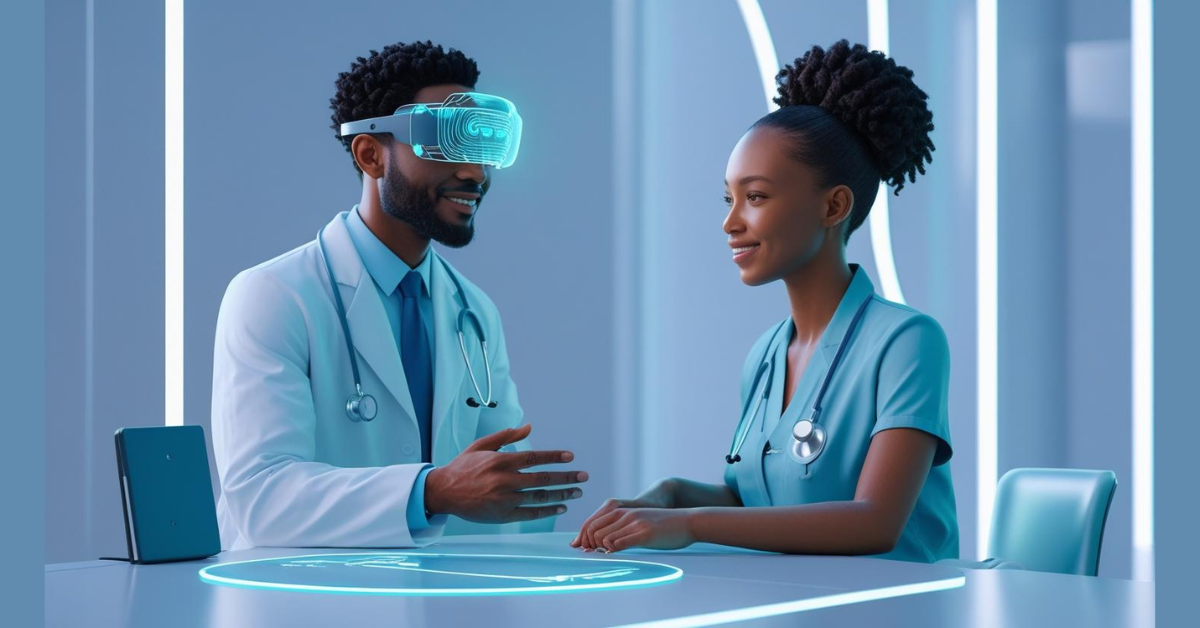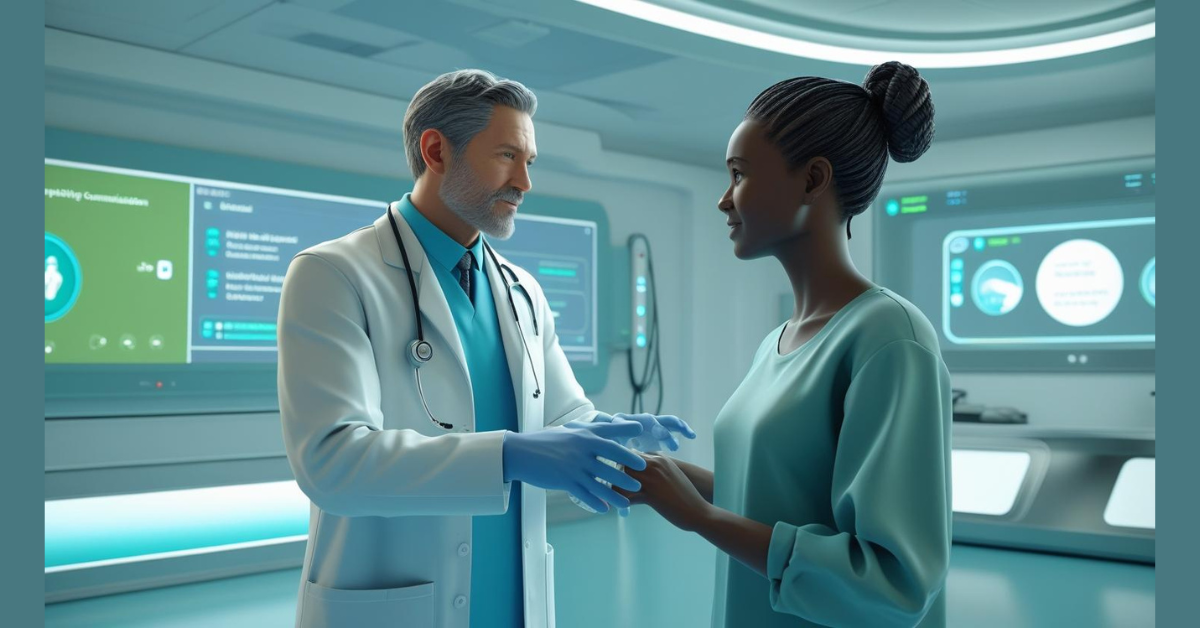The Virtual Patient Communication Training in 2026. Effective virtual patient simulators for medical communication training a systematic review.
The Virtual Patient Communication Training in 2026
Executive Summary
Virtual persistent communication preparing has advanced into a modern, AI-driven instructive technique that combines immersive virtual reality, counterfeit insights, and progressed recreation advances. In 2026, these preparing stages are changing how healthcare experts create basic communication abilities, advertising standardized, adaptable, and profoundly compelling learning encounters that complement conventional clinical instruction.
The Evolution of Virtual Patient Technology
Current State of Virtual Patient Training
Virtual quiet communication preparing speaks to a critical progression in therapeutic instruction, utilizing cutting-edge innovation to form practical persistent intuitive. Among organizations that haven’t however grasped VR, 86 percent anticipate to receive it by 2026, showing far reaching acknowledgment of its esteem in healthcare instruction.
Key Technology Components
Virtual Reality Program
Advanced VR frameworks make completely immersive situations where healthcare understudies can hone understanding intelligent in practical clinical settings. VR makes a close real-world, rapid-fire reaction situation where understudies learn to think on their feet and perform beneath weight.
Artificial Intelligence Integration
AI and ML are utilized to reproduce virtual patients who related with learners, enabling enthusiastic, responsive dialogs that alter to understudy responses and learning needs.
Mixed Reality (MR) and Augmented Reality (AR)
Whereas VR awards the client to be completely drenched interior the virtual environment, AR and MR supplement and encouraged VR with the user’s reality, giving flexible arranging choices for diverse learning scenarios.
AI-Driven Virtual Patients
Advanced Conversational Capabilities
The integration of expansive dialect models and generative AI has revolutionized virtual quiet intuitive, empowering characteristic dialect discussions that closely reflect genuine understanding experiences.
Key Features of AI Virtual Patients
- Inherent Language Processing: Allow fluid, contextual conversations
- Emotional Awareness: Recognition and response to emotional cues
- Comfortable Responses: Personalized interactions based on student show
- Clinical Accuracy: Medically accurate symptom presentation and responses
- Cultural Sensitivity: Diverse patient personas reflecting real-world populations
Machine Learning Applications
The utilize of AI and ML in communication aptitudes preparing for wellbeing care experts is clearly a developing and promising field with a potential to render preparing more cost-effective and less time-consuming.
ML-Enhanced Training Benefits
- Predictive Analytics: Identifying students at risk of communication skill deficits
- Personalized Learning Paths: Adaptive curricula based on individual needs
- Performance Assessment: Automated evaluation of communication competencies
- Real-Time Feedback: Immediate guidance during training sessions
Platform Technologies and Solutions
Leading VR Training Platforms
SimX VR Medical Simulation
SimX gives comprehensive VR therapeutic preparing with natural interfacing that permit teachers to convey simulation-based learning viably, indeed without earlier VR involvement.
Oxford Medical Simulation
Mechanized scenarios in VR and on-screen offer recreation at scale and standardize clinical encounters. Our no-code writing stage permits you to adjust scenarios to meet your special needs.
VRpatients®
VRpatients® may be a no-code stage for making immersive, AI-driven VR, MR, and web-based quiet simulations available anytime, anyplace, advertising adaptable get to for differing instructive settings.
UbiSim for Nursing
UbiSim underpins medical attendants to create their clinical judgment and communication abilities as well as a heart for patient-centric care, giving specialized preparing for nursing experts.
No-Code Authoring Platforms
Present day virtual quiet stages include user-friendly creating apparatuses that empower teachers to make custom scenarios without programming skill, democratizing get to progressed reenactment innovation.
Communication Skills Training Applications
Core Communication Competencies
Virtual patient training addresses essential healthcare communication skills including:
Patient Interaction Skills
- Active Listening: Techniques for effective patient engagement
- Empathetic Communication: Developing emotional intelligence in clinical settings
- Cultural Competency: Training for diverse patient populations
- Tough Conversations: Managing challenging clinical discussions
- Health Learning: Communicating composite medical information clearly
Specialized Communication Scenarios
- Mental Health Interactions: Training for psychiatric and behavioral health encounters
- Geriatric Communication: Age-specific communication strategies
- Pediatric Interactions: Child and family-centered communication
- End-of-Life Conversations: Sensitive communication in calming care
- Crisis Communication: Leading emergency and high-stress situations
Specialty-Specific Training
Psychiatric and Mental Health
Virtual reality has been utilized to create reenactment and preparing instruments, in specific through epitomized virtual patients (VP) advertising the opportunity to lock in in face-to-face human-like intuitive particularly planned for mental wellbeing preparing scenarios.
Geriatric Care
Specialized virtual patients recreate age-related communication challenges, counting cognitive impedance, hearing troubles, and complex restorative histories.
Implementation and Accessibility
Flexible Training Delivery
VR preparing permits healthcare experts to prepare when it fits their plan. Usually especially useful for active suppliers who may discover it challenging to go to conventional preparing programs. VR stages can be gotten too remotely, empowering learners to hone anyplace.
Scalability and Standardization
Virtual understanding preparing offers exceptional versatility, permitting educate to supply reliable, high-quality communication preparing to expansive numbers of understudies at the same time.
Benefits of Standardized Training
- Consistent Learning Experiences: All students receive identical training scenarios
- Quality Assurance: Standardized assessment criteria and feedback
- Resource Efficiency: Reduced need for human standardized patients
- Repeatability: Students can practice scenarios multiple times
- Data Collection: Comprehensive analytics on training effectiveness
Assessment and Feedback Systems
Real-Time Performance Evaluation
Progressed virtual understanding stages deliver fast, data-based feedback on communication execution, engaging quick ability headway and upgrade.
Evaluation Components
- Verbal Communication Analysis: Assessment of language use, tone, and precision
- Non-Verbal Behavior: Evaluation of body language and facial expressions
- Emotional Intelligence: Evaluation of empathy and emotional recognition
- Clinical Knowledge Integration: Evaluation of medical accuracy in communication
- Cultural Sensitivity: Assessment of appropriate cross-cultural communication
Data-Based Feedback
Prompt, evidence-based execution input composed by clinicians, for clinicians guarantees that understudies get significant direction for change based on built up best hones.
Educational Integration
Curriculum Integration Strategies
Healthcare teaches are joining virtual understanding communication preparing into comprehensive instructive programs that complement conventional clinical encounters.
Integration Approaches
- Pre-Clinical Preparation: Building communication skills before patient encounters
- Clinical Skill Reinforcement: Practicing specific scenarios between clinical rotations
- Capability Assessment: Formal assessment of communication abilities
- Ongoing Education: Ongoing skill growth for practicing professionals
- Remediation Programs: Targeted training for students with communication deficits
Inter-professional Education
Virtual patient platforms facilitate inter-professional communication training, allowing students from different healthcare disciplines to practice collaborative care scenarios.
Cost-Effectiveness and Efficiency
Economic Benefits
Virtual patient communication training offers significant cost advantages compared to traditional standardized patient programs:
Cost Reduction Factors
- Reduced Personnel Costs: Fewer human standardized patients required
- Scheduling Flexibility: No coordination of multiple human participants
- Repeatability: Unlimited practice opportunities without additional costs
- Scalability: Training large numbers of students simultaneously
- Travel Elimination: Remote access reduces transportation costs
Time Productivity
Understudies can get to preparing at their comfort, maximizing learning openings whereas minimizing planning clashes and calculated challenges.
Quality Control and Confirmation
Evidence-Based Effectiveness
This study presents a scoping review of research on artificial intelligence (AI)- driven virtual patients (VPs) for communication skills training of healthcare students, demonstrating growing research support for these training methodologies.
Learning Results Estimation
Virtual understanding stages give comprehensive analytics that empower teachers to track understudy advance, recognize learning holes, and optimize preparing programs.
Key Performance Measure
- Communication Skill Improvement: Measurable increases in competency scores
- Student Engagement: Time spent in training and scenario completion rates
- Knowledge Retention: Long-term retention of communication skills
- Clinical Application: Transfer of virtual training to real patient interactions
- Student Satisfaction: Learner feedback and training program ratings
Future Developments and Innovations
Emerging Technologies
Haptic Feedback Integration
Advanced haptic technology will enable students to experience physical aspects of patient communication, such as appropriate touch in therapeutic interactions.
Biometric Monitoring
Integration of physiological monitoring will provide insights into student stress responses and emotional engagement during training scenarios.
Advanced AI Personalities
Future virtual patients will feature even more sophisticated AI personalities capable of complex emotional responses and nuanced communication patterns.
Research and Development Priorities
Effectiveness Studies
Continuous investigate centers on comparing virtual persistent preparing results with conventional strategies and distinguishing ideal preparing conventions.
Technology Enhancement
Proceeded advancement of more reasonable virtual situations, progressed AI reactions, and upgraded appraisal capabilities.
Accessibility Improvements
Endeavors to form virtual quiet preparing more open over distinctive instructive settings and asset levels.
Global Assumption and Best Practices
International Execution
Healthcare institutions worldwide are implementing virtual patient communication training as part of comprehensive educational reform initiatives.
Regional Adaptations
- Cultural Customization: Virtual patients reflecting local populations and cultural norms
- Language Localization: Training platforms available in multiple languages
- Healthcare System Combination: Alignment with local clinical practices and quality
- Regulatory Consent: Meeting educational approval requirements
Best Practice Requirements
Application Strategies
- Gradual Introduction: Phased implementation with pilot programs
- Faculty Training: Comprehensive educator preparation for new technologies
- Student Intention: Thorough introduction to virtual training platforms
- Continuous Improvement: Regular evaluation and perfect of training programs
- Technology Help: Robust technical infrastructure and user support
Problems and Resolutions
Technology Hurdles
Common Performance Challenges
- Technical Infrastructure: Needs for high-performance evaluating and networking
- Cost Discussions: Initial investment in VR equipment and software licensing
- Faculty Resistance: Overcoming reluctance to adopt new teaching methodologies
- Student Adaptation: Helping learners adjust to virtual training environments
Solution Strategies
- Institutional Support: Strong leadership commitment to technology adoption
- Training Programs: Comprehensive preparation for educators and students
- Technical Support: Dedicated IT support for virtual training platforms
- Gradual Implementation: Phased rollout to minimize disruption
Instructive Quality Confirmation
Guaranteeing that virtual understanding preparing keeps up the same instructive measures as conventional strategies requires cautious arranging and progressing assessment.
Conclusion
Virtual persistent communication preparing in 2026 speaks to a transformative approach to healthcare instruction that combines cutting-edge innovation with evidence-based educational standards. The integration of AI-driven virtual patients, immersive VR situations, and advanced appraisal frameworks makes phenomenal openings for creating basic communication abilities.
As healthcare organizations proceed to recognize the significance of viable persistent communication, virtual preparing stages offer versatile, cost-effective arrangements that can supplement and upgrade conventional instructive strategies. The proceeded advancement of these innovations guarantees indeed more noteworthy capabilities for planning healthcare experts to convey compassionate, viable quiet care.
Victory in actualizing virtual persistent communication preparing requires astute arranging, satisfactory assets, and commitment to nonstop enhancement. Teach that grasp these imaginative preparing strategies whereas keeping up center on instructive quality and understudy results will be best situated to plan the following era of healthcare experts for the complexities of present day persistent care.
Long haul of virtual persistent communication preparing lies within the proceeded integration of progressed innovations, evidence-based instructive hones, and a commitment to moving forward persistent results through improved supplier communication abilities. As these stages gotten to be more advanced and open, they will play a progressively vital part in healthcare instruction around the world.
Read More:
https://nurseseducator.com/didactic-and-dialectic-teaching-rationale-for-team-based-learning/
https://nurseseducator.com/high-fidelity-simulation-use-in-nursing-education/
First NCLEX Exam Center In Pakistan From Lahore (Mall of Lahore) to the Global Nursing
Categories of Journals: W, X, Y and Z Category Journal In Nursing Education
AI in Healthcare Content Creation: A Double-Edged Sword and Scary
Social Links:
https://www.facebook.com/nurseseducator/
https://www.instagram.com/nurseseducator/
https://www.pinterest.com/NursesEducator/
https://www.linkedin.com/in/nurseseducator/
https://www.researchgate.net/profile/Afza-Lal-Din
https://scholar.google.com/citations?hl=en&user=F0XY9vQAAAAJ


